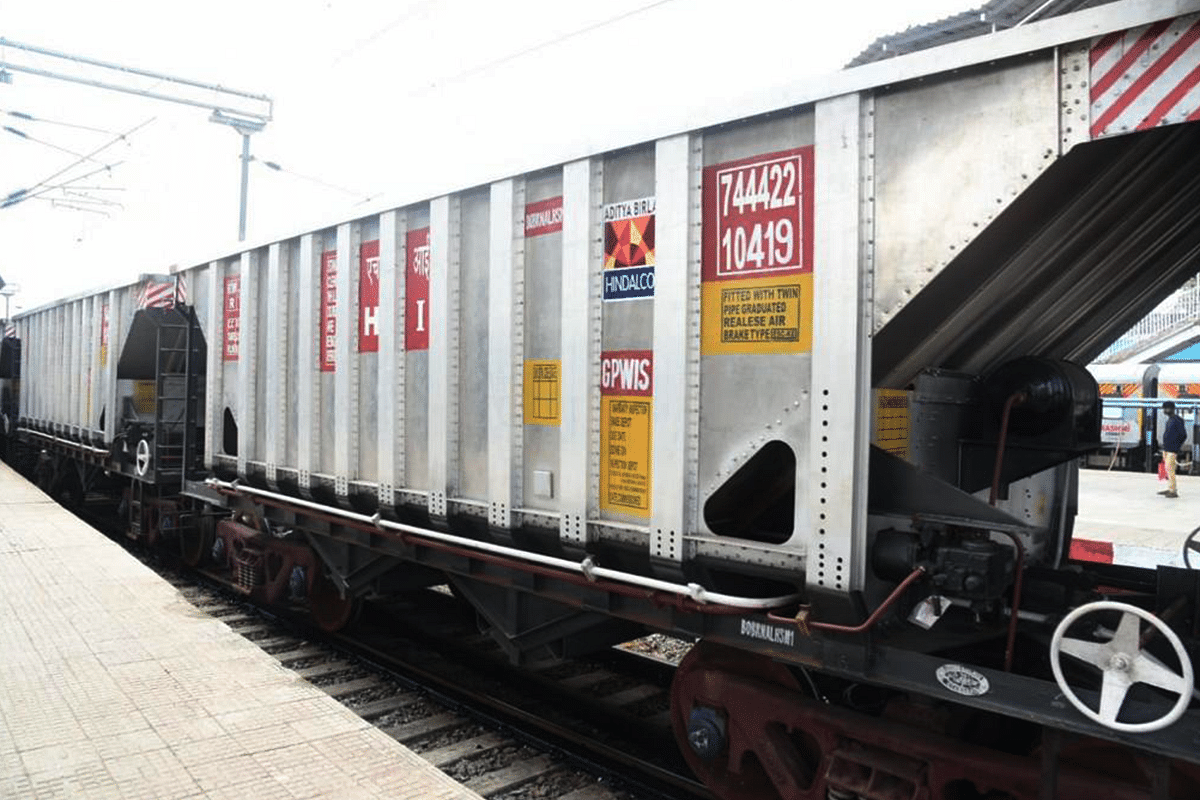Infrastructure
Reducing Carbon Footprint: India's First Aluminium Freight Rake And Its Impact Explained

Indigenously developed aluminium freight rail rake- 61 BOBRNALHSM1
Union Minister for Railways, Ashwini Vaishnaw flagged off India's first all-aluminium freight rail rake - 61 BOBRNALHSM1 at Bhubaneshwar Railway Station on 16 October.
The rake will carry coal for Hindalco's Aditya Smelter in Lapanga, Odisha.
What explains the use of Aluminium in rail industry?
Aluminium trains command a lion's share in the United States, Europe and Japan because of attributes such as sleek, aerodynamic designs and their ability to tilt at high speeds without going off the rails.
The silvery-white metal is the preferred choice for metro trains worldwide for their durability and most importantly – passenger safety, as it has improved crashworthiness or superior crash absorption capability.
Indian Railways have already announced their plans to make aluminium bodied Vande Bharat train sets.
Who has manufactured the all-aluminium freight rail rakes?
This is a dedicated effort for Make in India program as it has been fully designed and developed indigenously in collaboration with Research Designs & Standards Organisation (RDSO), HINDALCO and Besco Wagon.
The new generation wagon has been fabricated by BESCO Wagon based on RDSO-approved design, from high strength aluminium alloy plates and extrusions, indigenously made at Hindalco's state-of-the-art rolling facility in Hirakud, Odisha.
The lightweight aluminium wagons are a big innovation for Indian Railways and will help fast-track the country's ambitious plan to modernise freight transportation.
What are the key features of these all-aluminium freight rakes?
Fully Lockbolted construction with no welding on superstructure.
180 tonnes lighter than existing steel rakes resulting in higher throughput per wagon.
Can carry 5-10 per cent more payload.
Consumes less energy with relatively negligible wear and tear to rolling stock and rails.
Offer 19 per cent higher payload to tare weight ratio, which will have a transformative impact on the Railways' logistics and operational efficiency.
What is the economics of these wagons?
The manufacturing cost of the new rakes is 35 per cent higher, compared to the steel rakes, as the superstructure is all aluminium.
However, these rakes have lower maintenance cost due to higher corrosion and abrasion resistance.
These rakes have a 10 year longer lifespan as compared to normal ones and even after 30 years, they will be as good as new.
The new rakes are 100 per cent recyclable and have an 80 per cent salvage value (post lifespan of the wagon).
And, how it will enable us to achieve our climate goals?
The bottom discharge aluminium freight wagon, specifically designed to carry coal, is tipped to reduce the carbon footprint for Indian railways measurably.
The reduced tare (weight of an empty rake) will reduce carbon footprint, due to lower consumption of fuel in empty direction and more transport of freight in loaded condition.
For every 100 kg weight reduction of the wagon, the lifetime CO2 saving is 8-10 tonnes.
This translates to a saving of more than 14,500 tonnes of CO2 for a single rake over its lifetime.
With the Railways planning to deploy more than one lakh wagons in the coming years, the potential annual CO2 reduction could be to the tune of over 25 lakh tonnes, assuming a 15-20 per cent shift to aluminium wagons - a notable contribution to the country's sustainability goals.
Introducing ElectionsHQ + 50 Ground Reports Project
The 2024 elections might seem easy to guess, but there are some important questions that shouldn't be missed.
Do freebies still sway voters? Do people prioritise infrastructure when voting? How will Punjab vote?
The answers to these questions provide great insights into where we, as a country, are headed in the years to come.
Swarajya is starting a project with an aim to do 50 solid ground stories and a smart commentary service on WhatsApp, a one-of-a-kind. We'd love your support during this election season.
Click below to contribute.
Latest